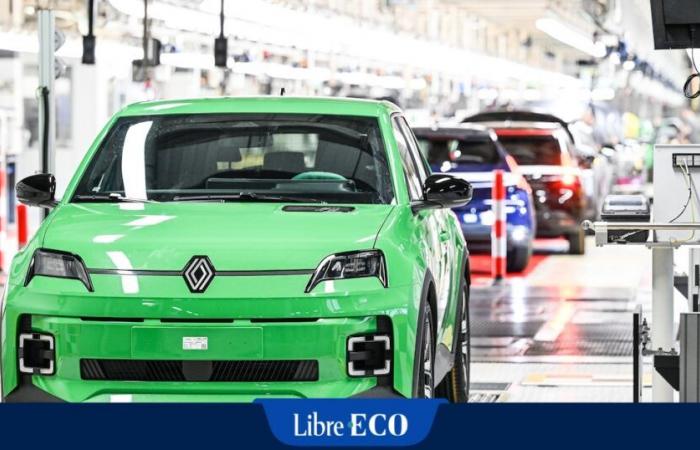This R5 represents both the past of the diamond brand and the future, above all. “The factory was built in 1971 and hosted the production of the R5 from 1974. Fifty years later, it is back in Douai in an electric version”evokes Pierre-Emmanuel Andrieux, the director of the factory.
The future is the firm conviction that electric vehicles are indeed the future despite the bad winds that have been blowing on the market for several months and the desire of some to postpone the European Union’s decision until later. to ban the sale of new thermal vehicles from 2035.
The future is and remains electric
“Don’t count on me to say everything is fine. Electric cars are a big part of the future, no matter the obstacles.” underlined Luca de Meo, the boss of the Renault group but also of Ampere, present in Douai to celebrate the 1st anniversary of Ampere, the entity which encompasses all of Renault’s electrical activities, from software design, to assembly of batteries and vehicles.
Ampere’s activity is located in France, and more precisely to the north of Paris, while the tendency is generally to set up in countries offering lower labor costs, whether in the Eastern Europe, in Turkey or even in Morocco. This is not the choice of the heart of a French manufacturer for his native land. Rather, it is a thoughtful and reasoned choice.
Electric cars: Belgium going against the grain of Europe
“This decision may have seemed a little unorthodox, but there was thought behind it”explained Luca De Meo, with a broad smile on his lips. In fact, labor cost is just one factor among many. It is largely overshadowed by the cost of energy when it comes to building electric cars, and especially their batteries. “It was actually a strategic decision.” Thanks to its fleet of nuclear power plants and its renewable energy potential, the electricity produced in France has one of the lowest carbon footprints in Europe, which corresponds to the philosophy of producing cars without CO2 emissions. In addition, the “energy cost is competitive. The future electric Twingo, announced for 2026, will nonetheless be built in Slovenia for the good reason that the current version is already assembled there.
Ampere’s desire is in any case to move forward in all directions to reduce costs.
Cost reduction
Reducing costs means saving time on the assembly line by reducing the complexity of assembly. When Luca de Meo arrived at the head of Renault in the summer of 2020, a car had 2,600 parts on average. The R5 is around 1,000 parts and 750 for the future Twingo.
It’s also tackling the drums. “The battery represents between 30 and 50% of the price of the electric car, including 75% for the chemical component.notes Philippe Brunet, Engineering Director. “LFP batteries are a key asset in this context. LFP batteries, for lithium, iron, phosphate, cost less than those made with nickel, cobalt and manganese (NCM).” The cost reduction will be 20% from 2026. But the LFP battery is not the solution for all cars. “Their energy density is low.” Hence the need to couple it with the current generation for ranges of/or exceeding 600 kilometers.
It’s still drawing from a good source the best practices in the field of electric cars, a path whose destination is logically China. The Chinese company Launch Design worked on the Twingo project, which will allow Renault to release a car in two years compared to the traditional four. “With such a deadline, we match the Chinese players in speed”, adds Luca de Meo. The speed of development saves money.
Ampere is also setting up the ACDC project (the English acronym for alternating current and direct current) for “Advanced China Development Center” whose mission is to track good practices in the Chinese ecosystem. Enough to inspire all the Ampere teams and be able to compete with Chinese manufacturers.
Batteries made in France
The objective of achieving a 40% cost reduction by 2028 for 2nd generation electric cars, such as the Megane E-Tech launched in 2022, was therefore confirmed by Luca de Meo. “By 2028, we will have caught up with Chinese manufacturers in terms of cost and production“, he assured, while the collaboration with a Chinese company will gain new momentum from spring 2025.
Renault and AESC entered into an agreement in 2021 for the construction of a gigafactory in Douai. The batteries for the R5 will be built there, some 500 meters from the assembly plant. “Our capacity will make it possible to supply batteries for 180,000 to 200,000 vehicles.”specifies Sébastien Rouard, General Manager.
For now, the modules come from China and are assembled on the first floor of the Ampere factory. It takes around a hundred nuts to make the batteries of the Megane and Scenic completely airtight and watertight, and 70 for the batteries of the R5.






